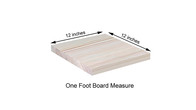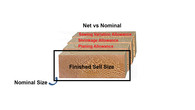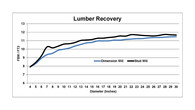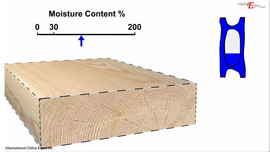Moisture Content / Lumber Shrinkage X Foot Board Measure X  Target Size X  Fibre Recovery Percentage X  Lumber Recovery by Diameter X  Lumber Recovery:
 Foot Board Measure 1 fbm (foot board measure) is equal to a board 12" wide x 12" long x 1" thick. Fbm is calculated as thickness (inches) x width (inches) x length (feet) / 12.
 Target Size Lumber green target size must allow for:
Green target sizes will have a direct effect on lumber recovery. Reducing saw kerf and sawing deviation will allow decreased green target sizes which will increase lumber recovery.  Fibre Recovery Percentage Net lumber recovery for a 1st quartile northern softwood sawmill with an average log top diameter of 6.0" (15 cm) could be up to 304 fbm/m3 or 8.6 fbm/ft3 or .47 m3/m3. Log quality, target sizes, saw kerfs and wane allowances will all effect maximum lumber recovery. In this example the fiber recovery distribution is:
 Lumber Recovery by Diameter Lumber recovery generally increases as the log size increases. The graph shows the relationship between log size (top diameter) and lumber recovery.
| ||



